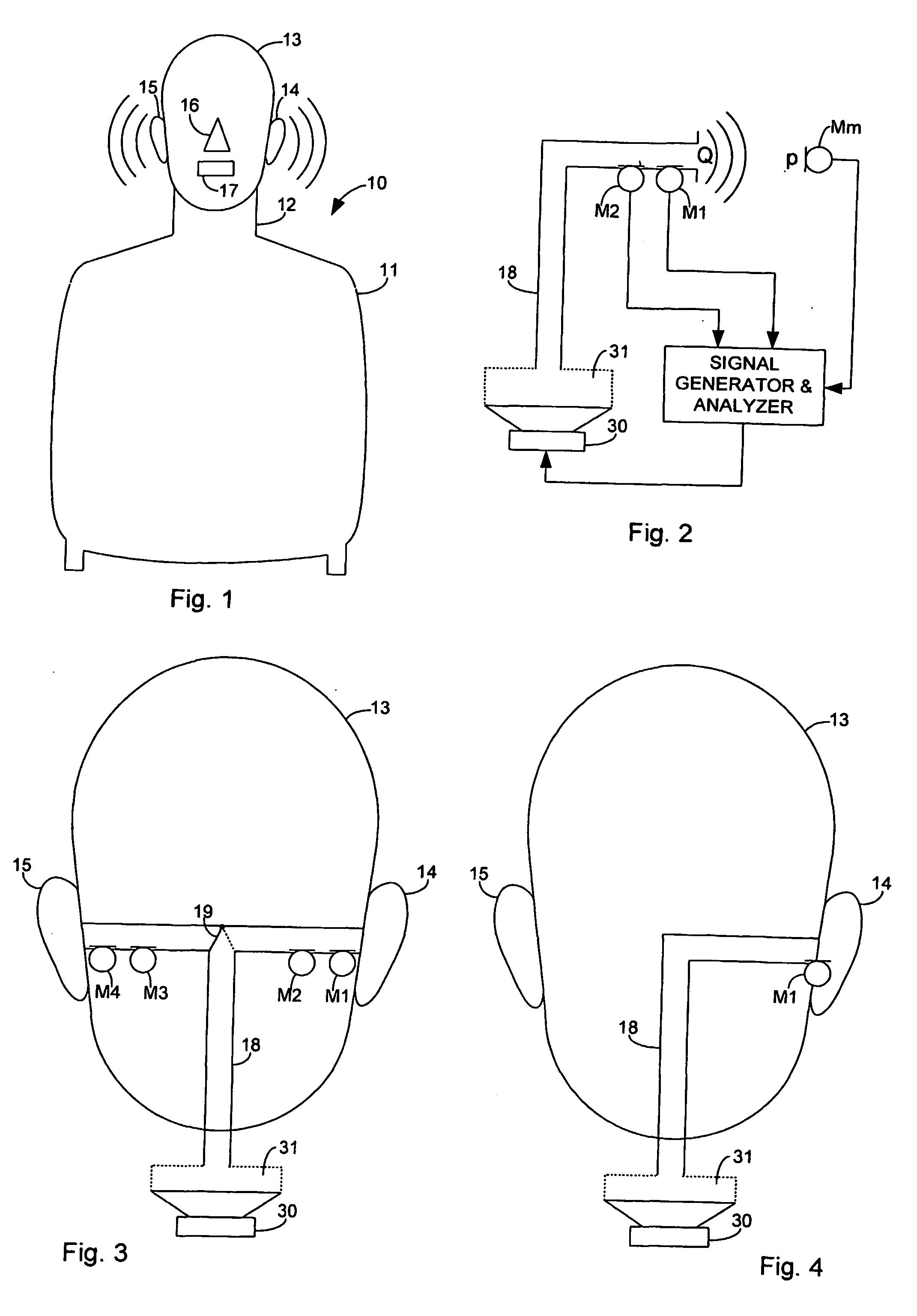Method and device for determining acoustical transfer impedance
- Summary
- Abstract
- Description
- Claims
- Application Information
AI Technical Summary
Benefits of technology
Problems solved by technology
Method used
Image
Examples
Embodiment Construction
[0021] The invention is described with reference to the FIGS. 1-3. In the following, for simplicity all structures of the simulator that simulate portions of a human body are named as the corresponding human anatomical structures, which they are simulating. Thus, the structure of the simulator that simulates a human ear is referred to as an “ear” and not as a “simulated ear”.
[0022]FIG. 1 shows a front view of a simulator 10 with a torso 11 and neck 12 carrying a head 13. On the head the simulator has a left ear 14 and a right ear 15 each of which is shown with a pinna. Further, the head has a nose 16 and a mouth 17.
[0023]FIG. 3 shows schematically the interior of the head 13 of the simulator 10. Inside the simulator, preferably in the torso 11 or possibly in the neck 12, is a loudspeaker 30. The loudspeaker 30 is connected via a duct 18 to both ears 14 and 15. The duct 18 has a vertical portion and is branching like a “T” to the ears. The branching may also be in the form of a “Y”...
PUM
 Login to View More
Login to View More Abstract
Description
Claims
Application Information
 Login to View More
Login to View More - R&D
- Intellectual Property
- Life Sciences
- Materials
- Tech Scout
- Unparalleled Data Quality
- Higher Quality Content
- 60% Fewer Hallucinations
Browse by: Latest US Patents, China's latest patents, Technical Efficacy Thesaurus, Application Domain, Technology Topic, Popular Technical Reports.
© 2025 PatSnap. All rights reserved.Legal|Privacy policy|Modern Slavery Act Transparency Statement|Sitemap|About US| Contact US: help@patsnap.com



